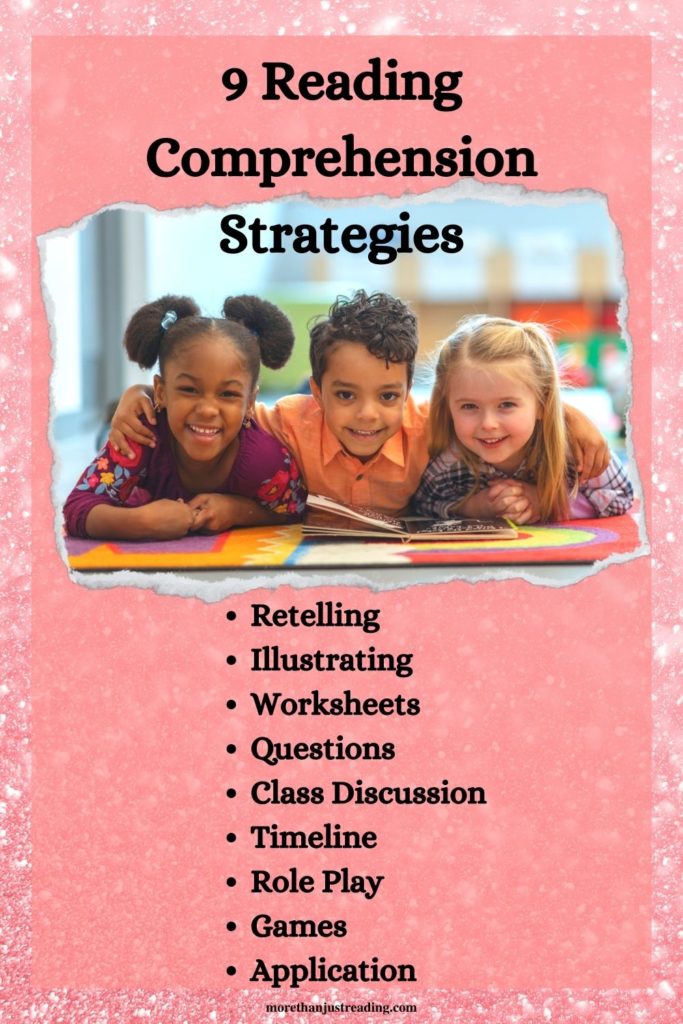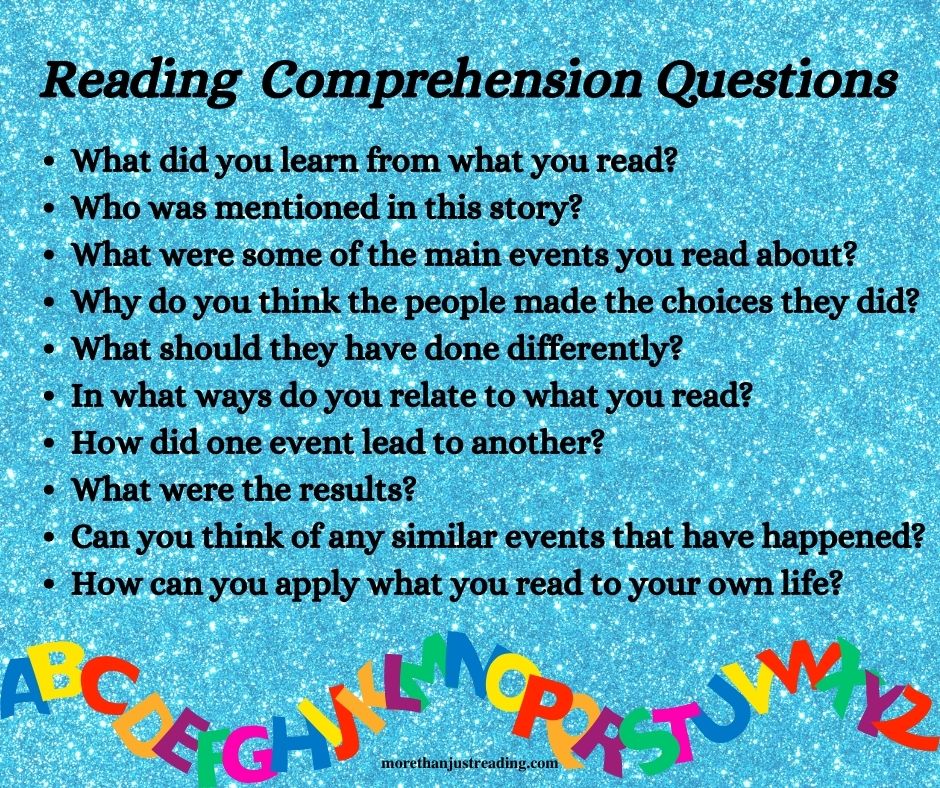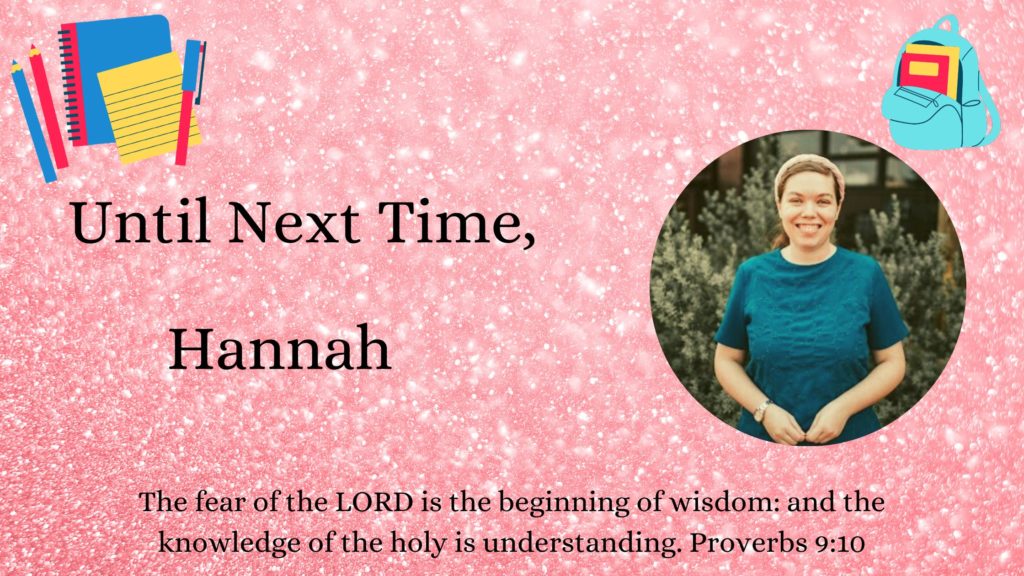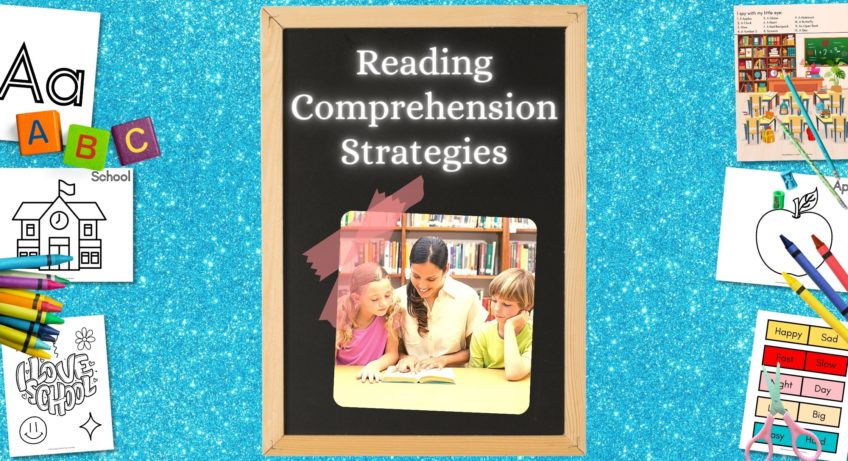When your students are reading, they should be not just be reading. They should also be comprehending, applying, and learning from what they read. And our job as teachers is to evaluate just how well they are doing these things. Today I’m sharing several reading comprehension strategies for evaluating just how well your students are understanding what they read.
What are the reading comprehension strategies?

Retelling
Depending on your students level, they can do it either verbally or on paper. Have them retell the story, in as much detail as they can remember. If needed, you can ask them questions to trigger their memory.
This is a strategy I’ve used with most of my ESL students. We have often read stories or articles together, and this has worked well for me to evaluate how much they understood and where any gaps in their comprehension were.
Illustrating
This is an especially good activity for younger readers though older readers who enjoy art would enjoy it as well. Have your students illustrate what they read. They can draw a number of pictures showing the sequence of what happened. You could also combine this activity with the timeline activity farther down in this article.
Worksheets
Another way to evaluate how well your students understood what they read is through worksheets and activities related to the book. In my book-based lessons I design, I include worksheets that can only be completed if the students understood or know how to reference what they read.
By doing these worksheets, the students will draw from what they read, and you will be able to tell how much they understood and remember. Worksheet ideas include crossword puzzles, picture searches, matching worksheets, and many other varieties.
Questions
I already briefly mentioned this, but asking questions are a good way of discovering how much your students understood. By asking them questions that dig deep into what they read, you can evaluate if they understood just the simple facts or if they were thinking deeply about what they read, looking for underlying meaning and less-clearly stated facts.
A list of possible questions:

Class Discussion
Draw your students out by getting them involved in a class discussion about what they read. Ask them questions to get them started and if some students are more inclined to be quiet in a group setting, ask them specifically to answer some of the questions or share their thoughts. By having all the students share their thoughts and opinions, this will add new perspective to what they read. You can use some of the questions listed above and modify them to fit what your students read.
Timeline
Have your students create a timeline of events for what they read. This would work well for a story or a historical event or scientific discovery. If the students have illustrated what they read as mentioned above, they can use their pictures on the timeline. By lining up the illustrations or note cards with key events in the correct order, your students will show how well they grasped what they read, especially in the area of order of events. Make sure all the important events covered are included in the timeline.
Role Play
Another way to see how much your students understood is to have them role play. The students can choose key events in what they read and act those out for their teacher and other classmates. After the role play, you could ask them a few questions about what they did.
Possible questions to ask:
- Why is this a key event?
- What can we learn from this part of the story?
- Why do you think the people acted as they did in this scene?
- What would you have done differently?
- What would you have done the same?
Games
Games are another great way to evaluate how much your students understood. You can turn the questions section above into a game, having the students race to answer questions. Or the role play section could be made into a game where the students watching must guess what part is being acted out. There are many other game possibilities as well. If the text mentions a specific game, the students could play it.
Application
The last of my reading comprehension strategies is to have the students specifically apply what they read. As they think about what they read, have them think about ways they can apply it to their own lives. Are there any lessons they can take away from what they read? How are they similar or different to the people they read about? Are there any changes they need to make in their own lives based on what they read?
By applying what they read and thinking critically about it, they will be digging deeper into their reading passage and better understanding what was meant.

Conclusion:
Reading is an important part of learning new things, and giving your students skills for analyzing and applying what they learn will be a benefit to them. As they grow older, they will learn more detailed and complicated ways of sorting and applying the information they have learned: diagrams, charts, etc.
But for beginning, these simple strategies will be a foundation that gets them used to thinking critically about what they read and also looking for ways to apply it to themselves personally.
For more content like this, lesson plans, reading assignments, and teaching tips, go ahead and sign up for my e-newsletter.


